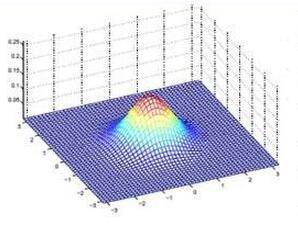Factor analysis (FA) or principal component analysis (PCA) models the covariance matrix of the observed data as R = SS' + {\Sigma}, where SS' is the low-rank covariance matrix of the factors (aka latent variables) and {\Sigma} is the diagonal matrix of the noise. When the noise is anisotropic (aka nonuniform in the signal processing literature and heteroscedastic in the statistical literature), the diagonal elements of {\Sigma} cannot be assumed to be identical and they must be estimated jointly with the elements of SS'. The problem of estimating SS' and {\Sigma} in the above covariance model is the central theme of the present paper. After stating this problem in a more formal way, we review the main existing algorithms for solving it. We then go on to show that these algorithms have reliability issues (such as lack of convergence or convergence to infeasible solutions) and therefore they may not be the best possible choice for practical applications. Next we explain how to modify one of these algorithms to improve its convergence properties and we also introduce a new method that we call FAAN (Factor Analysis for Anisotropic Noise). FAAN is a coordinate descent algorithm that iteratively maximizes the normal likelihood function, which is easy to implement in a numerically efficient manner and has excellent convergence properties as illustrated by the numerical examples presented in the paper. Out of the many possible applications of FAAN we focus on the following two: direction-of-arrival (DOA) estimation using array signal processing techniques and portfolio selection for financial asset management.
翻译:因子分析(FA)或主成分分析(PCA)将观测数据的协方差矩阵建模为R = SS' + {\Sigma},其中SS'是因子的低秩协方差矩阵(也称为潜变量),{\Sigma}是噪声的对角矩阵。当噪声是各向异性的(在信号处理文献中称为非均匀,而在统计文献中称为异方差)时,{\Sigma}的对角元素不能假定相同,必须与SS的元素一起估计。本文的中心主题就是在上述协方差模型中估计SS和{\Sigma}的问题。在更正式地陈述此问题后,本文回顾了解决此问题的主要现有算法。然后,我们继续展示这些算法的可靠性问题(如收敛失败或收敛到不可行解),因此它们可能不是实际应用的最佳选择。接下来,我们解释如何修改其中一种算法以改进其收敛性能,并介绍一种新的方法,称为FAAN(各向异性噪声下的因子分析)。FAAN是一种坐标下降算法,它迭代地最大化正态似然函数,它易于以数字高效的方式实现,并具有出色的收敛性能,如本文介绍的数值实例所示。在FAAN的许多可能应用中,我们关注以下两个方面:使用阵列信号处理技术进行到达方向(DOA)估计和用于金融资产管理的投资组合选择。




